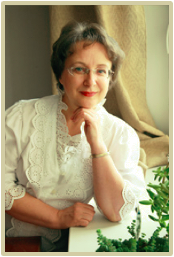© 2022 Natalia Aleksandrovna MITSUK, Natalia Lvovna PUSHKAREVA
MA&B 2022 – № 2(24)
DOI: https://doi.org/10.33876/2224-9680/2022-2-24/03
Citation:
Mitsuk N.A., Pushkareva N.L. (2022) Antropologiya rodil’noj kliniki v Rossii v XIX – nachale XX v.: klinicheskoe prostranstvo, pacienty i professionaly [Anthropology of maternity clinics in Russia in the XIX – early XX century: clinical space, patients and professionals], Meditsinskaya antropologiya i bioetika [Medical Anthropology and Bioethics],2(24).
 Natalia Aleksandrovna Mitsuk –
Natalia Aleksandrovna Mitsuk –
Doctor of Historical Sciences,
Associate Professor of Philosophy, Bioethics,
History of Medicine and Social Sciences
Smolensk State Medical University (Russia: Smolensk)
https://orcid.org/0000-0002-9862-1272
Email: nmitsyuk@gmail.com
Doctor of Historical Sciences,
Professor,
Head of the Center for Gender Studies
Miklukho-Maklay Institute of Ethnology and Anthropology of the Russian Academy of Sciences (Moscow)
https://orcid.org/0000-0001-6295-3331
Email: pushkarev@mail.ru
Keywords: childbirth, history of maternity culture, obstetrics, technocratic model of childbirth, medicalization of childbirth, clinical obstetrics.
Abstract: In Russia, the social history of maternity care is a new topic for research. The presented publication reveals the uniqueness of the anthropology of the maternity clinic within the framework of the biomedical model of obstetrics introduced during the second half of the XVIII – early XX century. The article shows that clinical obstetric care acquired legitimacy exclusively in large cities and was perceived by the population as a pathological place for childbirth. On the one hand, the approved technocratic model of childbirth reduced the level of maternal and infant mortality, provided prompt care and anesthesia. But on the other hand, isolation and segregation of patients took place, rigid ideas about norm and pathology were introduced, the number of surgical interventions that were not always justified grew; patients became an object for medical actions, losing their individuality and initiative, the only maternity position was fixed at the supine position. The space of the maternity clinic reflected, first of all, the interests of doctors, was aimed at maximizing the effectiveness of their obstetric manipulations on women in labor. Midwives have taken a subordinate place in the hierarchy of medical personnel, completely subordinate to doctors. Clinical obstetrics destroyed the traditional culture of childbirth, based on the free behavior of the woman in labor, the preservation of the female space of childbirth, the use of religious rites, folk medicine.
*The research was carried out at the expense of the grant of the Russian Science Foundation No. 22-28-00625 and supported by the Ministry of Science and Higher Education of the Russian Federation (Agreement No. 075-15-2020-910).
References
Conrad, P. (2007) The Medicalization of Society, Baltimore, 204 p.
Davis-Floyd, R. (1996) The Technocratic Body and the Organic Body: Hegemony and Heresy in Women’s Birth Choices, New Jersey, p. 123–166.
Davis-Floyd, R.E. (1994) The Technocratic Body: American Childbirth as Cultural Expression, Social Science and Medicine, vol. 38 (8), pp. 1125–1140.
Gelis, J. (1991) History of Childbirth: Fertility, Pregnancy and Birth in Early Modern Europe, Boston, 326 p.
Green, M.H. (2008) Making Women’s Medicine Masculine: The Rise of Male Authority in Pre-Modern Gynecology, Oxford, 409 p.
Kiyashhenko, L.P., Ozhiganova, A.A. (2021) Antropologija reprodukcii, rodov i akusherstva: opyt mezhdisciplinarnoj refleksii [Anthropology of reproduction, childbirth and obstetrics: the experience of interdisciplinary reflection], Medicinskaja antropologija i biojetika [Medical anthropology and bioethics], vol. 22, No 2 (http://www.medanthro.ru/?page_id=5661).
Leavitt, J.W. (1986) Brought to Bed. Childbearing in America 1750–1950, Oxford, 284 p.
Leykin, I., Rivkin-Fish, M. (2021) Politicized Demography and Biomedical Authority in post-Soviet Russia, Medical Anthropology: Cross Cultural Studies in Health and Illness, vol. 41 (9), pp. 857–869.
Loudon, I. (Ed.) (1997) Western Medicine: An Illustrated History, Oxford: Oxford University Press, 347 p.
Loudon, I. (1991) On maternal and infant mortality, 1900–1960, Social History of Medicine, No 4, pp. 29–73.
Minghui, Li (2020) Childbirth transformation and new style midwifery in Beijing, 1926–1937, The History of the Family, vol. 25 (3), pp. 406–431.
Mitsyuk, N.A., Belova, A.V. (2021) Akusherskij trud kak pervaja oficial’naja professija zhenshhin v Rossii v XVIII – nachale XX v. [Midwifery as the first official profession of women in Russia, 18th to early 20th centuries], RUDN Journal of Russian History, No 20 (2), pp. 270–285.
Mitsyuk, N.A., Pushkareva, N.L. (2021) Zarozhdenie biopoliticheskoj modeli rozhdaemosti v XIX – nachale XX v. [The origin of the biopolitical model of birth control in the 19th – beginning of 20th centuries Russia], Zhurnal Issledovanii Sotsial’noi Politiki [Journal of Social Policy Studies],No 19 (3), pp. 421–436.
Mitsyuk, N.A., Pushkareva, N.L. (2017) U istokov medikalizacii: osnovy rossijskoj social’noj politiki v sfere reproduktivnogo zdorov’ja (1760–1860 gg.) [The Origins of Medicalization: The Basis of Russian Social Policy in the Field of Reproductive Health (1760–1860)], Zhurnal issledovanij social’noj politiki [The Journal of Social Policy Studies], No 15 (4), pp. 515–530.
Mitsyuk, N.A., Pushkareva, N.L., Belova, A.V. (2021) Istochnikovedcheskij potencial fondov rodil’nyh domov i otdelenij v dorevoljucionnoj Rossii. Vtoraja polovina XVIII – nachalo XIX v. [Source Potential of the Fonds of Maternity Hospitals and Wards in Pre-Revolutionary Russia: Second Half of the 18th – Early 20th Century], Herald of an Archivist, No 4, pp. 1009–1022.
Mitsyuk, N.A., Pushkareva, N.L., Belova, A.V. (2019) The history of childbirth as the subject of social and humanitarian studies in Russia, History of Medicine, No 6 (3), pp. 153–157.
Porter, R. (Ed.). (2006) Cambridge History of Medicine, Cambridge, 400 p.
Veremenko, V.A. (2011) Organizacija akusherskoj pomoshhi dvorjankam v Rossii vo vtoroj polovine XIX – nachale XX v. [Organization of obstetric care for noblewomen in Russia in the second half of the XIX – early XX century], Vestnik Leningradskogo gosudarstvennogo universiteta im. A.S. Pushkina, No 4 (3), pp. 138–144.
Wolf, J.H. (2011) Deliver Me from Pain: Anesthesia and Birth in America, Baltimore, 367 p.
